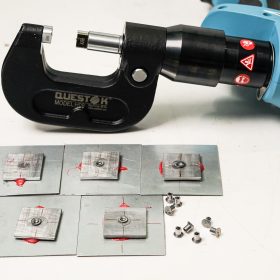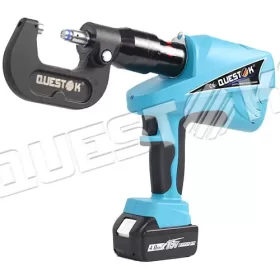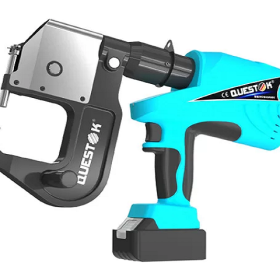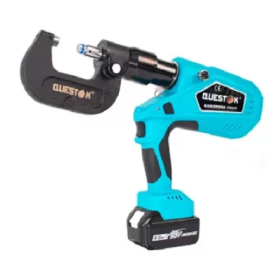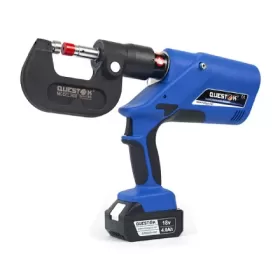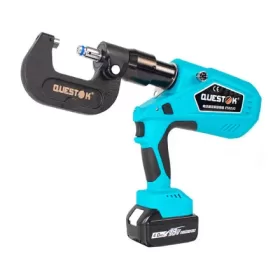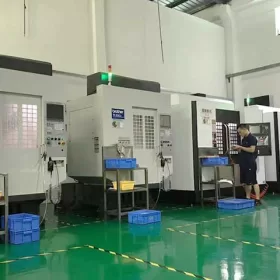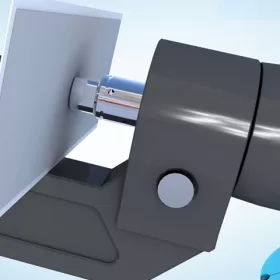Optimizing Self-Piercing Gun Riveters for Different Materials and Applications
Self-piercing gun riveters have become indispensable tools in various industries, facilitating the rapid and efficient assembly of lightweight structures. To ensure optimal performance, proper optimization of these riveters is essential to accommodate the diverse materials and applications encountered. This article delves into the key aspects involved in optimizing self-piercing gun riveters for different scenarios.
Material Considerations
Alloy Composition and Thickness:
The alloy composition and thickness of the materials being joined significantly influence the riveting process. Harder alloys require higher riveting forces, while thicker materials may necessitate adjustments to the rivet size and tool settings. Proper selection of rivet material and gun parameters ensures adequate joint strength and prevents material damage.
Surface Finish and Pre-Treatment:
The surface finish and any pre-treatment of the materials can affect the riveting process. Oxidation, paint, or other coatings may necessitate additional cleaning or surface preparation to enhance adhesion and prevent interference with the riveting mechanism.
Tool Optimization
Rivet Size and Type:
Selecting the appropriate rivet size and type is crucial for optimal performance. Rivet diameter should match the material thickness, while the rivet type (solid or split) depends on the desired joint strength and application requirements. Proper rivet selection ensures reliable fastening and minimizes the risk of oversizing or undersizing joints.
Tool Force and Stroke:
The riveting gun’s force and stroke settings require optimization to suit the material thickness and rivet size. Insufficient force may result in incomplete piercing or joint failure, while excessive force can damage the materials or deform the rivet.
Tool Speed and Cycle Time:
The riveting speed and cycle time should be adjusted to maximize productivity without compromising joint quality. Selecting the appropriate speed and dwell time ensures optimal rivet formation and minimizes the potential for rivet defects.
Application-Specific Considerations
Joint Design and Geometry:
The design and geometry of the joint, including its shape, size, and accessibility, influence the riveting process. Complex joints may require specialized tooling or modified riveting techniques to achieve optimal results.
Riveting Environment:
The environmental conditions, such as temperature, humidity, and vibration, can impact the riveting process. Ensuring that the tool is properly calibrated and maintained for the specific environment is essential for consistent performance and safety.
Operator Training and Skill Level:
The skill level and training of the operator can significantly affect the effectiveness of the riveting process. Proper training ensures operators are knowledgeable about the equipment, materials, and techniques required to achieve high-quality joints.
Conclusion
Optimizing self-piercing gun riveters for different materials and applications requires careful consideration of multiple factors. By understanding the material properties, tool parameters, and application-specific requirements, manufacturers and users can ensure that these riveters deliver consistent, efficient, and reliable fastening solutions. Proper optimization enables industries to maximize productivity, improve joint quality, and reduce production costs.
- Company News
- Industry News
- Tag
- Tags
-
The Advantages of Questok Rivet Guns: Precision, Efficiency, and Durability
In industrial fastening applications, the choice of tools directly impacts productivity, safety, and long-term cost-effectiveness. Questok rivet guns have emerged as a standout solution for professionals across aerospace, automotive, and construction sectors. Combining advanced engineering with user-centric design, these tools deliver unmatched performance. Below are the key advantages that make Questok rivet guns a preferred choice:
-
Rivet Gun FAQ
Rivet Gun FAQ-SPR
-
Fast Assembly and Repair With Cordless Solid Rivet Gun
Questok cordless solid rivet gun stands out as a pivotal innovation, merging portability with power to facilitate efficient and effective fastening in a myriad of applications.
-
Redifine The Role of Self-piercing Riveting Gun Machine
Self-piercing riveting adopts high-speed mechanical fastening skill that joins thin sheet materials, typically steel and aluminum alloys.
-
The Latest Innovations in Clinching Tool Design
Explore the latest innovations in clinching tool design, redefining precision, efficiency, and versatility in material joining.
-
The Application and Maintenance of Self-Piercing Rivet Guns
Delve into the applications of self-piercing rivet guns in the automotive and aerospace industries and reveal the essential maintenance practices that ensure their accuracy and efficiency.
-
Rivetless Riveting Gun for Ventilation Duct Projects
The ventilation duct rivetless gun is a tool for riveting ventilation ducts without rivets.
-
Guide to Using Self-Piercing SPR Riveting Gun
In the automotive industry, self-piercing SPR (Self-Piercing Rivet) riveting guns are commonly used for joining metal components in vehicle bodies, including BMW vehicles.
-
Rivet Gun FAQ
Rivet Gun FAQ-SPR
-
Versatile Fastening- Applications of the Handheld Rivet Gun Across Industries
In the realm of fastening, the handheld rivet gun stands as a testament to ingenuity and versatility. Its ability to effortlessly join materials with sheer strength and permanence has revolutionized manufacturing and construction processes, leaving an enduring mark on diverse industries. Aerospace: Where precision and reliability are paramount, the rivet gun shines. In aircraft assembly, […]
-
Time-Saving Tools- Speeding Up Projects with Electric Blind Rivet Guns
In the whirlwind of project deadlines, every minute counts. But what if there was a tool that could dramatically reduce assembly time, giving you an edge in the race against the clock? Enter the electric blind rivet gun: your secret weapon for lightning-fast and effortless riveting. Electric blind rivet guns are the ultimate time-savers for […]
-
Streamlining Fastening- How an Electric Blind Rivet Gun Enhances Efficiency
Introduction In the realm of manufacturing and assembly, fastening plays a crucial role in securing components and ensuring structural integrity. Traditional manual rivet guns, while reliable, are often time-consuming and labor-intensive. The advent of electric blind rivet guns has revolutionized the fastening process, significantly enhancing efficiency and productivity. This article delves into the benefits of […]
-
The Role of Automation in Electric Rivetless Clinching
Electric rivetless clinching (ERC) is a lightweight joining process that eliminates the need for rivets or other fasteners. This can lead to significant cost savings and increased production efficiency. Automation plays a critical role in ERC, enabling high-speed and high-volume production. Automated Feed Systems Automated feed systems are used to accurately position the two workpieces […]
-
Why Choose a Universal Self-Piercing Riveting Gun for Your Projects?
In the realm of construction and fabrication, riveting guns stand as indispensable tools for creating secure and robust connections. Among the various types available, universal self-piercing riveting (SPR) guns have emerged as a game-changer due to their versatility and efficiency. This article will delve into the compelling reasons why choosing a universal self-piercing riveting gun […]
-
Why Choose Stainless Steel Hollow Rivets for Your Projects?
In the world of industrial manufacturing, choosing the right fasteners for your projects is crucial for ensuring longevity and reliability. Among the many options available, stainless steel hollow rivets stand out as a superior choice for a wide range of applications. This article delves into the compelling reasons why stainless steel hollow rivets are the […]
-
Top Trends in Electric Rivetless Clinching Guns
In the realm of fastening technology, electric rivetless clinching guns have emerged as a revolutionary solution for a wide range of industrial applications. These advanced tools offer several преимущества and capabilities, revolutionizing the way businesses approach their fastening needs. Adoption of Brushless Motors Brushless motors have gained significant traction in electric rivetless clinching guns due […]
